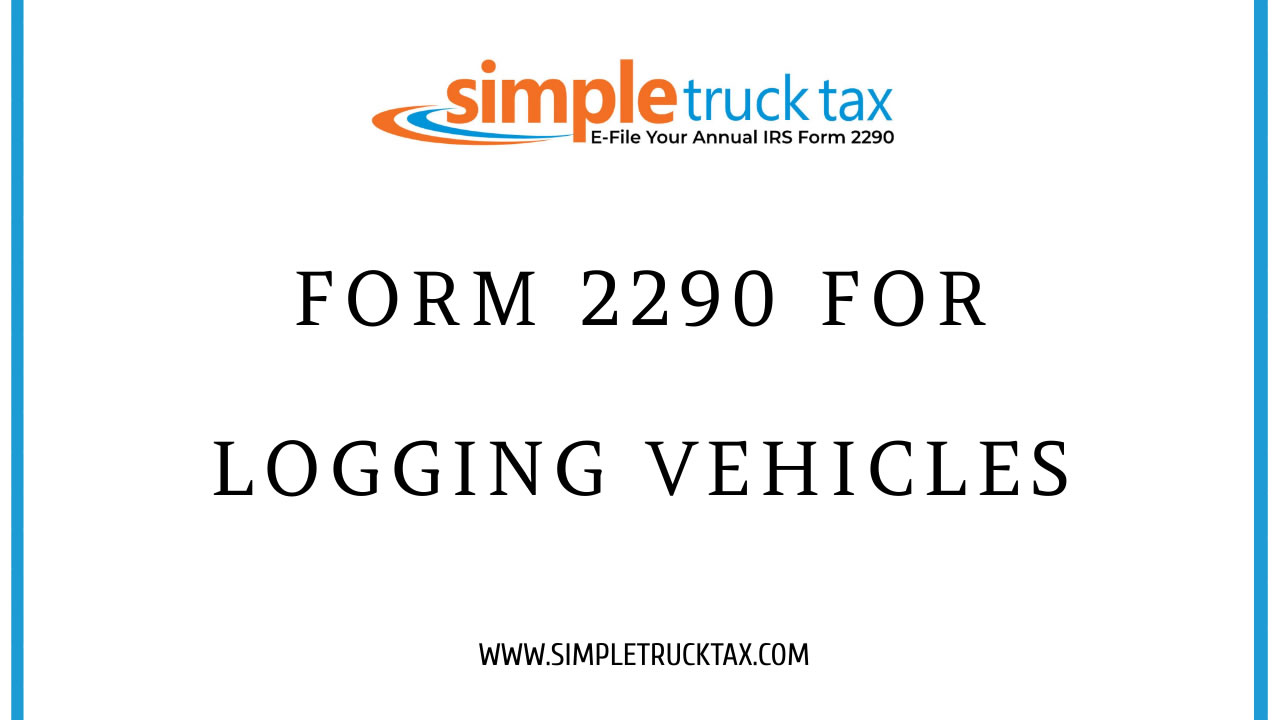
Form 2290 for logging vehicles
2290 Form Filing for Logging Vehicles: A Comprehensive Guide
If you operate a logging vehicle, it is crucial to understand the nuances of Form 2290 in order to remain compliant with IRS regulations and avoid penalties. This guide walks you through the details of filling out Form 2290 specifically for logging vehicles and ensures that you are able to complete it with confidence.
What is Form 2290?
Form 2290, also referred to as Heavy Highway Vehicle Use Tax Return, is a federal tax form used for reporting and paying Heavy Vehicle Use Tax (HVUT). This tax is imposed on public highways on vehicles weighing 55,000 pounds or more. It’s purpose is meant to provide funding for highway maintenance and infrastructure.
Special Provisions for Logging Vehicles
Logging vehicles have special provisions under Form 2290 which may result in lower tax rates. To qualify as a logging vehicle, the truck must be used exclusively in transporting forest products like logs or wood chips harvested from a forested site or transporting product from the forest site of harvest to a mill or other processing facility.
Eligibility Criteria for Logging Vehicles
To receive reduced HVUT rates as a logging vehicle your vehicle should meet the following eligibility criteria:
- Exclusive Use: The vehicle must be employed solely in carrying forest products.
- Operational Routes: The transportation ought to take place on public highways running either from one forest site into another or from forests into processing plants.
- Vehicle Markings: Appropriate markings indicating that they are loggers’ cars must be placed on such cars.
How to Complete Form 2290 for Logging Vehicles
Gather Necessary Information:
- Employer Identification Number (EIN)
- Vehicle Identification Number (VIN)
- Gross taxable weight of the vehicle
Complete Part I:
Enter the tax year and month when this vehicle was first used.
Indicate that the vehicle is a logging vehicle by checking the appropriate box.
Calculate the Tax:
Use the tax table provided in the Form 2290 instructions to calculate the amount of tax based on the weight of your vehicle.
Remember that logging vehicles have lower tax bands so look up at the correct table.
Complete Part II:
Fill in all necessary details about your car including VIN and taxable gross weight.
The column for this should be marked to show that it has been used as a logging car.
Sign and Submit the Form:
Provide signature and date
You can file either electronically or mailing it back to them after filling it out completely; either way, it must include payment when being sent back to IRS office (Internal Revenue Service).
Filing Deadlines and Payment Options
Form 2290 is due on the last day of month following which you started using your commercial motor vehicle on public highways. For example, if you first use your truck in July, then, August 31st will be a deadline for filing Form 2290. Payment options include electronic payment through EFTPS (Electronic Federal Tax Payment System) offered by IRS, credit/debit card payment or check/money order payment.
Benefits of Electronic Filing
Advantages of e-filing form 2290 are:
- Faster Processing: Within minutes obtain stamped schedule 1(proof for payment).
- Immediate Confirmation: Make sure that they got your form properly completed and processed.
- Convenience: This allows the filing from any place using physical documents.
Penalties for Late Filing or Payment
When Form 2290 is not filed or HVUT is not paid by the due date, penalties and interest can be charged. The penalty for delayed submission usually amounts to 4.5% of the total tax due, and it is assessed on monthly basis within five months as opposed to interest charges that might accrue further raising the amount owed.
For compliance with IRS regulations, the Form 2290 for your logging vehicle needs to be filled out correctly. By adhering to the guidelines provided in this blog post, you can ensure that your vehicle is properly classified, take advantage of reduced tax rates and avoid costly penalties. Maintain accurate records at all times and seek advice from a tax professional if unsure about anything or need more help.
Note: For more information, visit IRS website